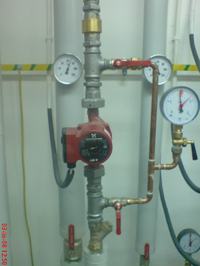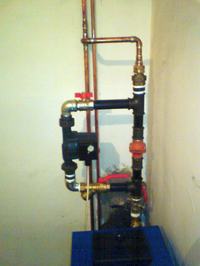Hello, I have a problem with heating the entire apartment, I am a complete layman in this topic. I have an apartment with an area of 69m2, an 8KW stove, and a Water Force 25-40-180C circulating pump.
The problem is that the radiators in the last two rooms are almost cold, and an even bigger problem is that the heat seems to stay on the stove, and then the temperature on the stove reaches up to 95 degrees and the radiators are almost cold, I don't know what is the reason for this.
This state lasts about 2 hours, after which something unblocked and the temperature drops to 50 degrees within 5 minutes.
I am asking for advice on what can be done with this problem.
The problem is that the radiators in the last two rooms are almost cold, and an even bigger problem is that the heat seems to stay on the stove, and then the temperature on the stove reaches up to 95 degrees and the radiators are almost cold, I don't know what is the reason for this.
This state lasts about 2 hours, after which something unblocked and the temperature drops to 50 degrees within 5 minutes.
I am asking for advice on what can be done with this problem.





